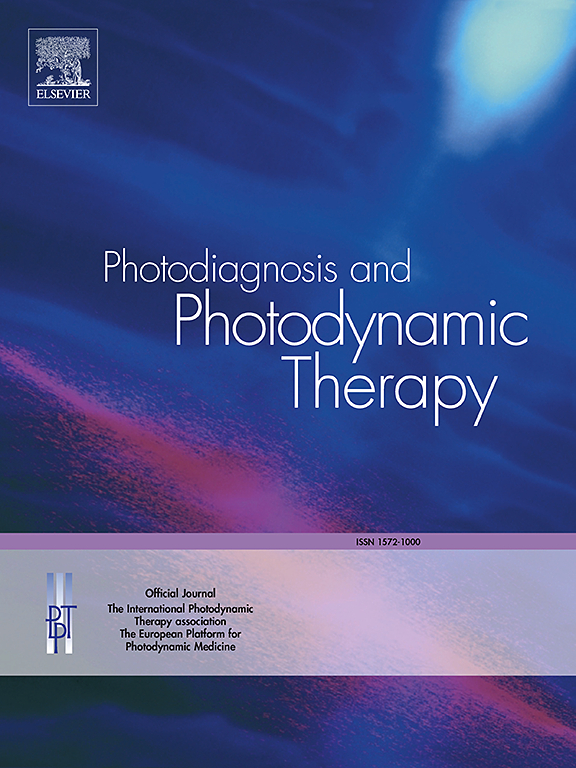抗菌光动力疗法治疗2型糖尿病患者种植体周围疾病的有效性:系统综述和荟萃分析
IF 2.6
3区 医学
Q2 ONCOLOGY
引用次数: 0
摘要
目的:本系统综述和荟萃分析严格评估抗菌光动力治疗(aPDT)对2型糖尿病(T2DM)患者种植体周围疾病的疗效。方法:系统检索自建库至2024年12月的5个数据库。主要结局包括探针深度(PD)、探针出血(BOP)、边缘骨水平(MBL)和斑块评分;次要结局是白细胞介素- 6 (IL - 6)和肿瘤坏死因子- α (TNF - α)。糖尿病前期患者被排除在外,因为种植体周围疾病的机制与T2DM患者有很大不同。结果:纳入了5项试验(每个结果98-235名受试者)。在短期内(≤3 个月),aPDT显著降低PD (SMD -0.41, -0.73至-0.09;I²=0%),防喷器(-0.81,-1.51至-0.12;I²=76%),斑块评分(-0.51,-0.80至-0.22;I²=0%),MBL无显著变化(-0.25,-0.62至0.12;²= 35%)。短期内,IL - 6降低(-0.33,-0.62至-0.04;I²=0%),而TNF‑α没有(-0.17,-0.50至0.17;²= 0%)。中期(3-12 个月),PD持续获益(-1.90,-3.50至-0.30;I²=94%),防喷器(-1.11,-1.90至-0.32;I²=81%),MBL(-0.72, -1.01至-0.44;I²=0%),斑块评分(-0.54,-0.96至-0.12;²= 28%)。中期,IL - 6 (-0.30, -0.64 - 0.04;I²=0%)和TNF - α(-0.20, -0.62至0.22;I²=0%)仍然降低,但没有统计学上的显著差异。结论:APDT在T2DM患者种植体围期临床和炎症预后方面具有显著的中短期改善作用。然而,由于纳入试验的数量和随访时间的限制,结果应谨慎解释。本文章由计算机程序翻译,如有差异,请以英文原文为准。
The effectiveness of antimicrobial photodynamic therapy for treating peri-implant diseases in people with type 2 diabetes mellitus: a systematic review and meta-analysis
Objective
This systematic review and meta-analysis rigorously assesses the efficacy of antimicrobial photodynamic therapy (aPDT) on peri‑implant diseases in patients with type 2 diabetes mellitus(T2DM).
Methods
Five databases were systematically searched from inception to December 2024. Primary outcomes included probing depth (PD), bleeding on probing (BOP), marginal bone level (MBL), and plaque scores; secondary outcomes were interleukin‑6 (IL‑6) and tumor necrosis factor‑α (TNF‑α). Prediabetic individuals were excluded because peri-implant diseases mechanisms differ substantially from those in T2DM.
Results
Five trials (98–235 participants per outcome) were included. In short‑term (≤3 months), aPDT yielded significant reductions in PD (SMD –0.41, –0.73 to –0.09; I²=0 %), BOP (−0.81, −1.51 to −0.12; I²=76 %), and plaque scores (–0.51, –0.80 to –0.22; I²=0 %), with no significant change in MBL (–0.25, –0.62 to 0.12; I²=35 %). In short‑term, IL‑6 decreased (–0.33, –0.62 to –0.04; I²=0 %), whereas TNF‑α did not (–0.17, –0.50 to 0.17; I²=0 %). In medium‑term (3–12 months), benefits persisted for PD (–1.90, –3.50 to –0.30; I²=94 %), BOP (−1.11, −1.90 to −0.32; I²=81 %), MBL (–0.72, –1.01 to –0.44; I²=0 %), and plaque scores (–0.54, –0.96 to –0.12; I²=28 %). In medium‑term, IL‑6 (–0.30, –0.64 to 0.04; I²=0 %) and TNF‑α (–0.20, –0.62 to 0.22; I²=0 %) remained reduced but with no statistically significant differences.
Conclusion
APDT confers significant short‑ and medium‑term improvements in peri‑implant clinical and inflammatory outcomes among T2DM. However, the results should be interpreted with caution due to limitations in the number of included trials and length of follow-up.
求助全文
通过发布文献求助,成功后即可免费获取论文全文。
去求助
来源期刊

Photodiagnosis and Photodynamic Therapy
ONCOLOGY-
CiteScore
5.80
自引率
24.20%
发文量
509
审稿时长
50 days
期刊介绍:
Photodiagnosis and Photodynamic Therapy is an international journal for the dissemination of scientific knowledge and clinical developments of Photodiagnosis and Photodynamic Therapy in all medical specialties. The journal publishes original articles, review articles, case presentations, "how-to-do-it" articles, Letters to the Editor, short communications and relevant images with short descriptions. All submitted material is subject to a strict peer-review process.
 求助内容:
求助内容: 应助结果提醒方式:
应助结果提醒方式:


